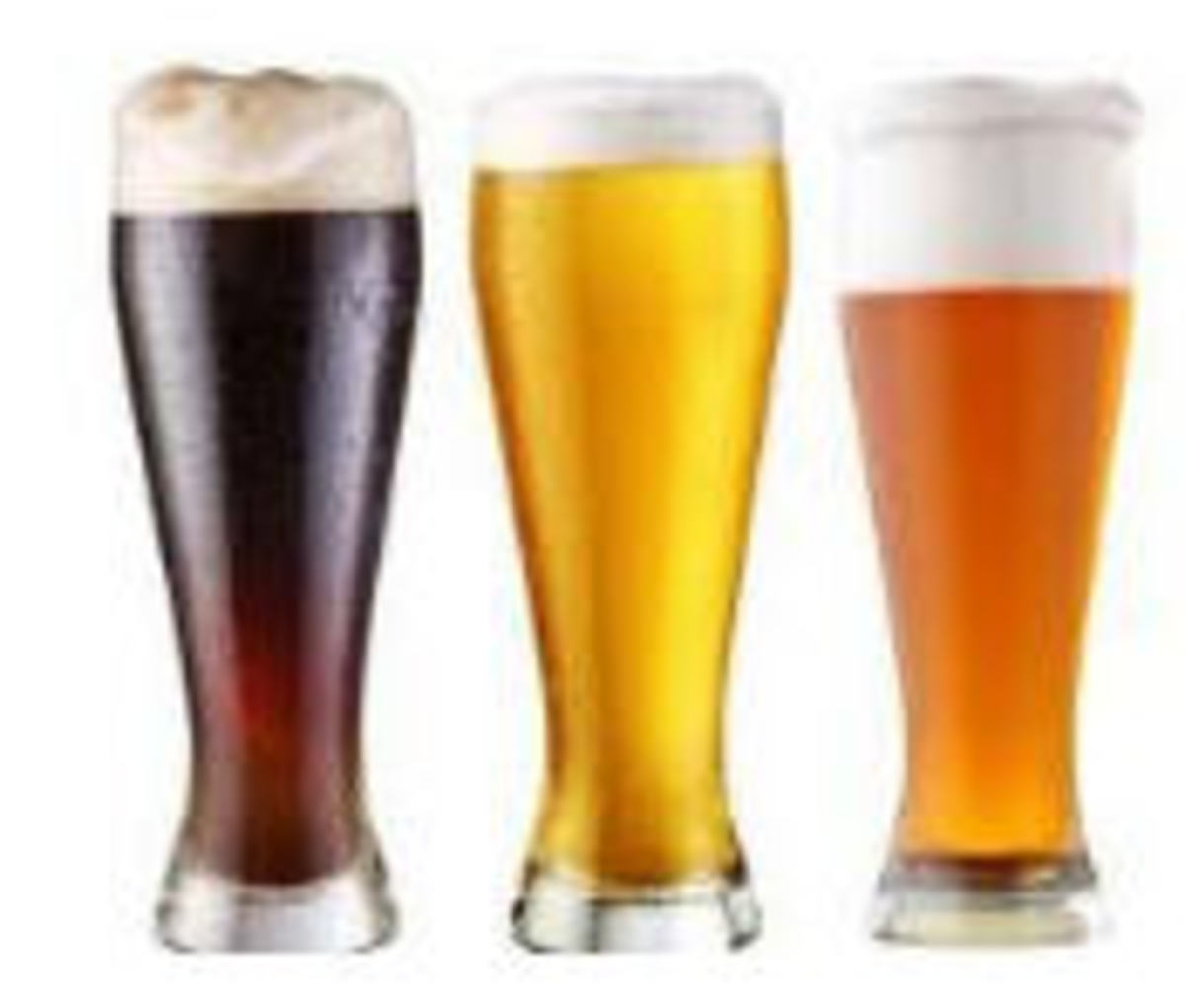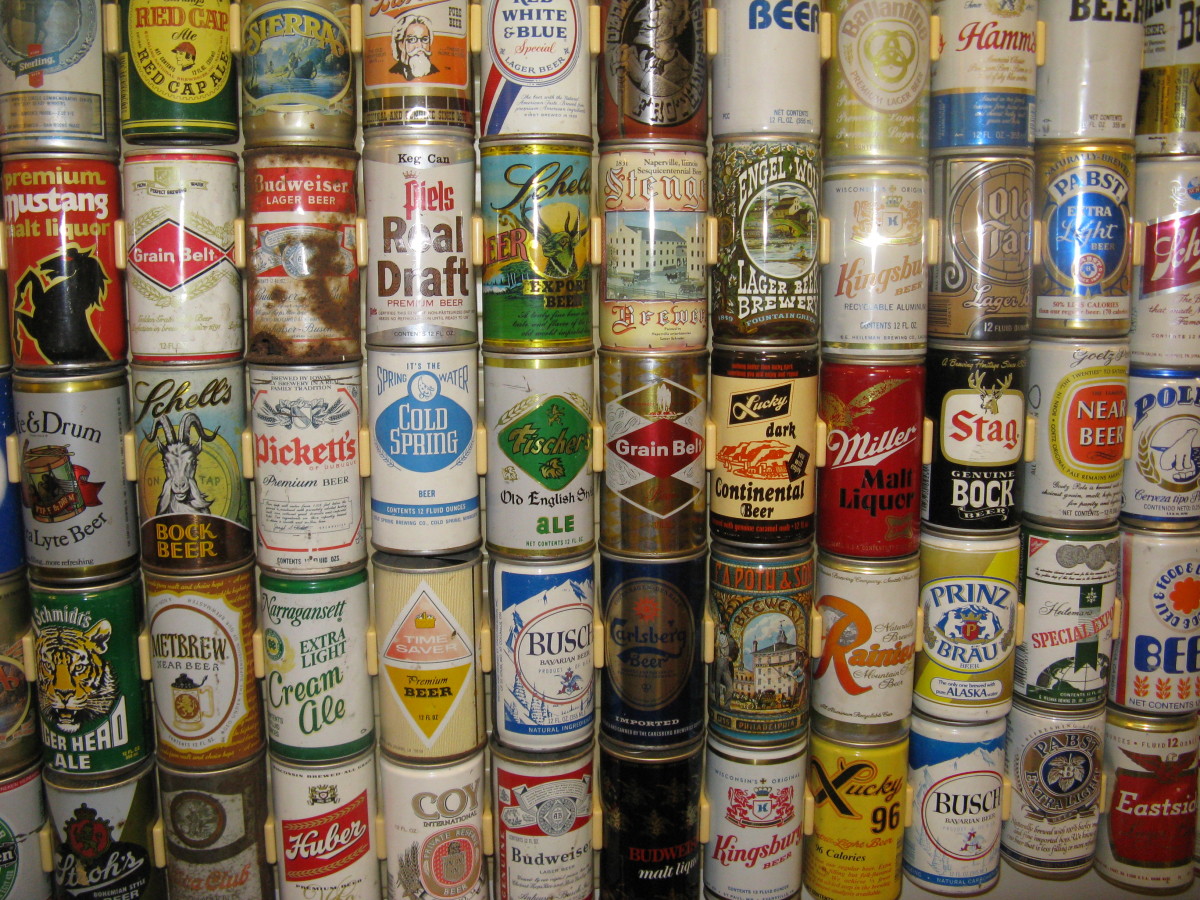The Science behind Beer Ingredients
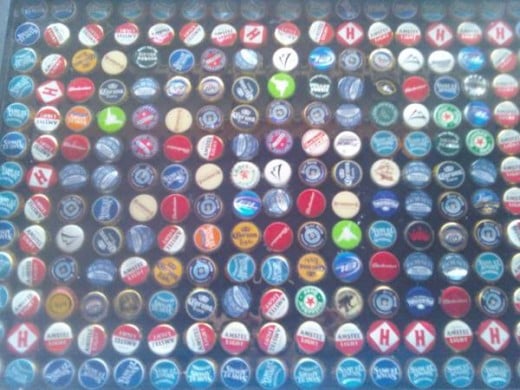
In another article on the subject of beer we looked at three of the four main ingredients of beer- barley grain, yeast, and water. Hops were briefly mentioned and will be looked at in more detail below. Also the process of beer brewing was looked at in detail already, taking into consideration the overall scientific reactions occurring in order for beer to be made. Barley grain is germinated to a particular point, then cracked, and soaked in hot water. All of this is done to open up the grain; enzymes will break down the cell walls in order to let loose the storage form of sugar, starch, and the necessary enzymes to break it down into its basic unit-glucose. Once this preparation is complete, the fermentable sugars in water get separated out from the unwanted solids. This is referred to as the wort; it is then subjected to boiling and cooling. Once cooled the yeast is added and gets down to business, utilizing the simple forms of sugar- maltotriose, maltose, and glucose-for energy and in the process creating ethyl alcohol and carbon dioxide. Carbonation, filtration, and packaging complete the process.
Related Hub
- The Science behind Beer
The beer brewing process including a description of the main ingredients with an emphasis on the scientific details.
Hops addition to the wort occurs early in the boiling stage. Then the removal of hops takes place before the fermentation stage. In some cases brewing contains two steps of hops addition- known as bittering and finishing hops. Interestingly, hops are a new addition to beer, although new is a relative term since beer itself is pretty old. Documenting beer began in the 5th century, while hops have been the primary bitter component starting in the 11th century. Prior to hops other ingredients were used to add bitterness to the brew. Hops are the female flowering clusters of the climbing vine plant. The scientific name for hops is Humulus Lupulus, within the family cannabidaceae (a fellow family member is hemp). The active component of the flower is the lupulin gland surrounded by bracteoles, smaller bracts. Bracts, like the ones on the barley plant detailed in part one, are the leaf-like structures on the flower. The lupulin gland contains two major components-the resin, a hydrocarbon secretion, and the essential oils. The resin is made up of two groups of acids, the alpha and beta acids. The acids of hops give beer its bitterness, which balances out the sweet flavor of the wort. While the essential oil of the hops contribute largely to the aroma and somewhat to the flavor as well. In addition, both alpha and beta acid perform an antiseptic function in beer brewing and storage. They favor yeast, dissuading other microorganisms to act on the brew.
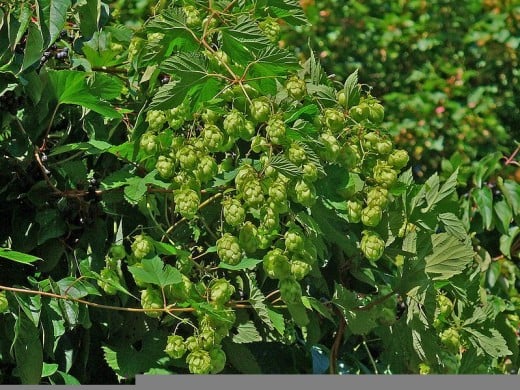
These two major functions of hops, bitterness and aroma, correspond to two major elements of the hop flower and dictate separate time points in terms of addition to the boiling wort. Hops added earlier in the wort boiling stage contribute bitterness while aroma hops, also called finishing hops, are added within the final minutes of the wort boil. Alpha acids of the resin impart bitterness to the brew. Beta acids contribute to a lesser extent to bitterness and can contribute to aroma as well. In addition beta acids play a role in long term storage of the beer. Alpha acids, mainly humulone, cohumulone, and adhumulone, bind together during boiling, isomerizing into a more soluble form than its individual precursors. This isomerization allows them to function in giving beer bitterness and these iso-alpha acids, as they are known, cause ‘skunking’ if allowed to react with light- which is why most beers are bottled in amber glass. Unlike the alpha acids, the beta acids will quickly evaporate since they do not isomerize. This is actually a good thing, since the beta acids, namely lupulone, colupulone, and adlupulone, give a more bitter taste than the alphas. In the end the smaller contribution of beta acids, due to their proportion and evaporation when boiled, are better when the flavor of the brew is in mind.
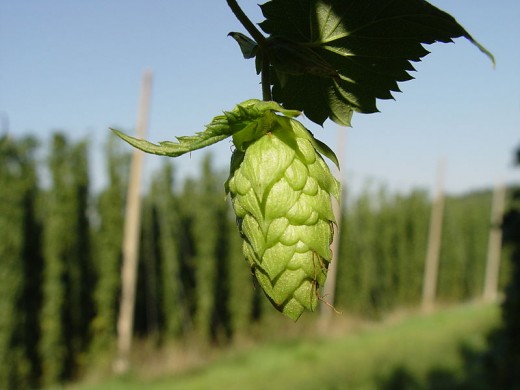
In order for beta acids to have a bigger impact, they make up part of the finishing hops or can be dry-hopped. Dry-hopping involves addition of hops after boiling and cooling of the wort; these hops are added during fermentation. Since beta acids evaporate off during wort boiling, addition at this later time-point allows for their effect on the aroma. Another term, a slightly confusing one, wet-hopping indicates the hops miss out on prepping before addition. Preparation equals drying the hops for preservation reasons, hence the term wet-hopping. Wet-hopping gives a distinct flavor when used. Finishing hops are added right before the end of the boil, allowing the essential oils to contribute to the beer. If added earlier in the boil, for the most part they would evaporate off. The essential oils, namely humulene, myrcene, caryophllene and farensene, contribute to both the aroma and flavor. Myrcene is the major essential oil found in American Craft Beers giving a citrus aroma to the beer. Humulene is the predominant oil found in the Noble Hops, named for the four regions of central Europe where they are grown. The Noble Hops impart only slight bitterness to the brew, due to low percentage of alpha acids and an even lower percentage of beta acids. Meanwhile these hops give an elevated aroma due to high concentration of essential oils.
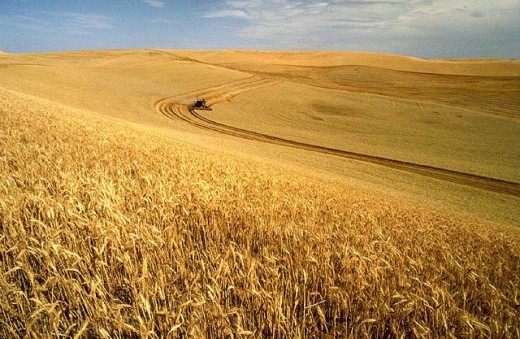
Now that we have discussed, in detail, the four major ingredients, another important component in many beer styles are adjuncts. Beer adjuncts represent additional ingredients added to beer to contribute to the flavor and aroma. Often times adjuncts end up adding distinguishing features setting one beer apart from another. Adjuncts can also cut costs on total fermentable sugars, another reason for their use. Grains other than malted barley, like un-malted barley, corn, wheat, and rice are used for this cost-cutting reason. Many American beers rely on grain adjuncts not only taking price into consideration but to give their characteristic flavor- Budweiser has rice in it. Also Hefeweizens and similar ‘wheat beers’ contain between 30 to 70% of wheat in the mash to give a distinct flavor. Wheat contains more protein then barley and in turn contributes to the thick, long-lasting head on the beer. Un-malted barley, used in Guinness for example, also contributes to the head as well as a rich, smooth flavor. Other common adjuncts, added to impart flavor, include coffee, chocolate, spices like coriander and nutmeg in winter brews, and fruit. Variation in beer is contributed to by so many adjunct options and combinations. In addition variations in the brewing process, starting with how and how long the barley is roasted, the type of yeast used, and the temperature and duration of fermentation can all be varied. All these permutations illustrate how the world of beer is wide and varied.
Two major distinctions occur when it comes to beer types: Ale or Lager. In terms of barley type, we find the domestic two-row barley in ales, while the genetically altered six-row barley is used for lagers (with adjuncts like corn and rice). Another key difference regarding yeast is where it settles- recall that at the end of fermentation when the yeast has consumed all the sugar it can, it either floats to the top or sinks to the bottom of the fermentation tank. Specifically the Saccharomyces cerevisia yeast float to the top and are used for ales, while lagers utilize Saccharomyces pastorianus which sink to the bottom. Also during fermentation the temperature varies for these two types of beers- for ale it is about 64 to 75° degrees F (21°C), while for lager it is about 50°F (10°C). Fermentation lasts longer for lager than ale, about six weeks compared to two weeks.
The basic division of ale or lager branches out to so many classifications on the beer family tree. Pale ale is not necessarily pale but named in direct comparison to the dark porter. A porter uses well-roasted barley giving a chocolaty taste to the beer. Pale ale, like the India Pale Ale (IPA), contains a lot of hops. Pilsners, like lagers, use bottom fermenting yeast and cold storage along with Noble Hops and have a more subtle taste than lagers. Hefeweizen is a wheat beer, light in both flavor and alcohol content, and it is unfiltered. A bock is a strong lager, with about a 6% alcohol content and low carbonation. A stout is a top-fermenter like ale that utilizes full-flavored roasted malt. There are gluten-free beers now available which typically contain sorghum, buckwheat, or quinoa. Belgian Lambic uses an alternative yeast option, other than a top or bottom dwelling yeast, airborne yeast species, namely Brettanoymyces bruxullensis and Brettanoymyces lambicus, native to Brussels. Resulting in a truly unique beer, that to me only resemblances other beers by the overall process alone. Lindermans’ Lambic beers go through secondary fermentation with various fruits- raspberries, cherries, and apples among others- they taste really sweet, more like champagne than beer. Another favorite of mine- Red Lager also referred to as an American Ale. This type of beer features caramel malted barley roasted at a higher temperature for a longer time than for other beers, according to the website of Killian’s Irish Red, a major commercial red beer.
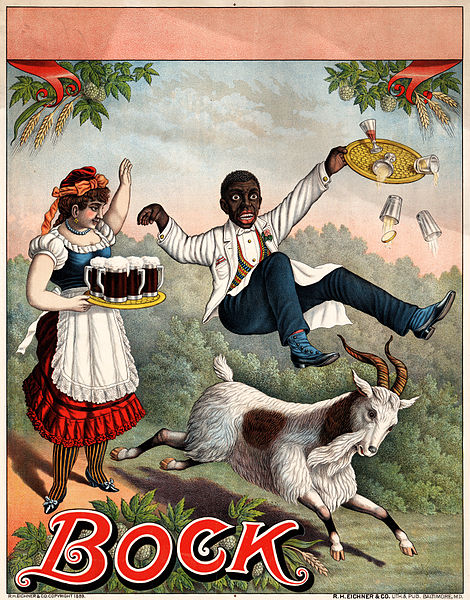
Alcohol content, most commonly quantified by ABV (Alcohol By Volume), indicates the amount of alcohol compared to the total liquid of the beer. Small scale brewers use a hydrometer, a thermometer type tool that measures the density of a liquid in relation to water. Calibration of the hydrometer takes place in water at 60°F then it is added to the wort before fermentation, again at 60°F. This measurement is the original gravity (OG), also known as the specific gravity. Then after fermentation has occurred the hydrometer takes the final or terminal gravity, again at 60°F. The final gravity (FG) is subtracted by the original, then this difference is multiplied by 131 to get a percentage of alcohol content. The sugar present in the wort, but absence once converted by the yeast, makes the difference in the overall density of the brew. Initially the wort will have a higher density then once fermentation has occurred it will lower. Most brewers use (OG-TG)*131=ABV %, favoring it over the more complicated equation used % alcohol= ((1.05 x (OG-TG))/TG)/0.79. ABV for most beers ranges from 2-12%, anything under 1.2% represents low alcohol content and anything under 0.05% ABV is not considered alcoholic. Most beers have between 4-6 % ABV, for example Budweiser contains 5% ABV.
Well that ends our scientific tour of beer. Even though discussion of this topic took two long articles, I caution the reader- every category discussed briefly here can be looked at in so much greater detail- the ingredients, the brewing process, different types of beers and the determination of alcohol content. Home brewers often become experts at all of these details as they put together their own brews. A lot of time can be spent looking into the different types of malted barley in terms of its preparation. As well a home-brewer carefully considers the wonderful world of adjuncts- grain and otherwise. So many different varieties of hops exist as well.
Now armed with the basics go out there and taste what beer has to offer. For those that normally turn your nose at beer, please know they are not all watered down light brews, there is so much more flavor and character in beer, only a small fraction of the different types were mentioned above. For those that always get the same kind, be daring and try a new brew. In general most restaurants with a large beer menu will let you try a taste of something before you commit to the whole glass. Also some liquor stores, again those will larger selections, will let you mix and match a six pack, so just ask. Lucky for beer-lovers, in order to fully understand the complex science behind beer, including the changes in the process and ingredients, one must be willing to taste many different kinds out there.

